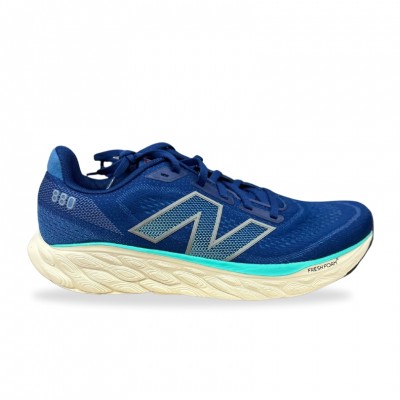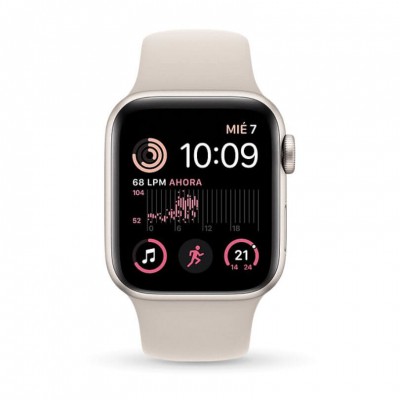Running slowly. Those two words that for many runners sound synonymous with not making progress. And yet, it is one of the greatest secrets of efficient and healthy running. In a sport where it seems that everything is measured by paces and personal records, the truth is that taking it easy - at least part of the time - has more benefits than you might think. And it's not just us at RUNNEA telling you that, but science confirms it, and today we're going to break down, one by one, the top 10 benefits of slow running. If you thought you would only improve by running fast, this article will give you reasons to rethink. Get your running shoes ready, today we're going to run slowly.

Not sure which running shoe to choose?
In a few simple steps we help you to choose the ideal running shoe for you
Go to the Shoe Finder1. Improve your aerobic capacity
When you run slowly, you train your body to become an aerobic machine. The aerobic system is the one we use when we run at low to moderate intensities, and it is the one that allows us to maintain the effort for long periods. According to studies in the Journal of Applied Physiology, running at low intensity helps the body make better use of fats as a source of energy, conserving glycogen for when you really need it: in the most physically demanding moments. In other words, the more time you spend running slowly, the more efficient your body becomes at using its energy. This is one of the keys to later performance in longer races such as half marathons or marathons.
2. Promotes better recovery
Recovery is an essential part of training, and it's not just about rest or sleep. Integrating low-intensity running sessions between harder workouts helps reduce the impact of lactic acid on muscles and facilitates better oxygen circulation, which speeds recovery. A study in Sports Medicine shows that gentle running promotes better metabolic waste removal, which translates into faster recovery without sacrificing weekly mileage. So, you can get back to intense workouts faster and in better shape.
3. Strengthens the heart without overloading it
The heart, like any other muscle, needs training to become more efficient. But subjecting it to high workloads on a continuous basis can even be detrimental. Running at a slow pace is a safe way to train your cardiovascular system without overtaxing it. The European Heart Journal supports that this type of training lowers blood pressure and resting heart rate, two key indicators of good cardiovascular health. The result? A stronger, more efficient heart, able to withstand the strain of more intense sessions without taking risks.
4. Develops strong mental endurance
running is a blend of physical and mental. While it's true that running fast demands strength and speed, running slower tests your patience and mental endurance. Maintaining a gentle pace for long periods of time may seem easy in theory, but science-in this case, a study from the University of Birmingham-suggests that running at controlled paces trains your mind to withstand prolonged exertion. In the long run, this practice better prepares you to deal with critical moments in long runs or situations where the mind wants to give up before the body does.
5. It burns more fat efficiently
A common myth among runners is that to lose weight or burn fat, you have to run fast and at high intensities. However, research from the American Journal of Clinical Nutrition shows that running at low intensity maximizes the use of fat as a primary source of energy, rather than burning carbohydrates. Not only does this type of training help you improve your body composition, but it also allows you to do it without wearing your body out as much, which is key to maintaining consistency over time.
6. Reduces the risk of injury
Running fast takes a greater toll on joints, ligaments and muscles, which can increase the risk of injury. Research published in the British Journal of Sports Medicine highlights that running at slower paces reduces stress on vulnerable areas such as the knees, ankles and hips. In addition, by reducing intensity, the body has more time to adapt to workloads, minimizing the risk of overtraining and repetitive stress injuries. This is crucial for those seeking a long and healthy athletic career, as every untreated injury can leave after-effects.

7. Increases muscle efficiency
When you run slowly, type I (or slow twitch) muscle fibers are the hardest working. These fibers are critical for endurance, as they have a high capacity to store and use oxygen. According to the Journal of Strength and Conditioning Research, this type of slow, prolonged training improves your muscles' ability to sustain long-duration efforts. In other words, gentle running increases muscular endurance without the addition of extremely strenuous or high-intensity sessions.
8. Allows you to increase your training volume
One of the keys to improving your running is to progressively increase your training volume. However, doing everything at high paces greatly increases the risk of physical and mental exhaustion. According to the International Journal of Sports Physiology and Performance, runners who integrate low-intensity sessions can significantly increase their mileage without experiencing chronic fatigue. This means you can run more, better and longer, without burning out prematurely.

9. Improves technique and body control
Running fast forces you to focus on performance, but you often neglect technique. Slow running, on the other hand, allows you to focus on your posture, body alignment and each stride. An article in the Journal of Biomechanics highlights that when you run slowly, you can observe and correct errors in your technique, which, in the long run, translates into a more efficient and less injury-prone running form. Every step counts, and at a gentle pace you can perfect your mechanics.
10. Improves mental well-being and reduces stress
Last but not least, slow running has an almost therapeutic effect on the mind. Mayo Clinic Proceedings research has shown that low-intensity aerobic exercise, such as running at gentle paces, reduces stress and anxiety levels, improving overall well-being. In addition, slow running stimulates the production of endorphins, which contributes to a feeling of happiness and relaxation. So, if you need a natural antidote to daily stress, a gentle jog may be the answer.
Slow running is not synonymous with lack of effort or less progress. On the contrary, it is one of the most powerful tools to improve your performance, prevent injuries and take care of your long-term health. Science backs up each of these benefits, proving that integrating low-intensity running into your training plan is not only smart, it's essential. So, next time you're out for a run, remember: it's not always about going fast, it's about knowing when it's time to slow down and get the most out of every stride.
Read more news about: Running Training





























